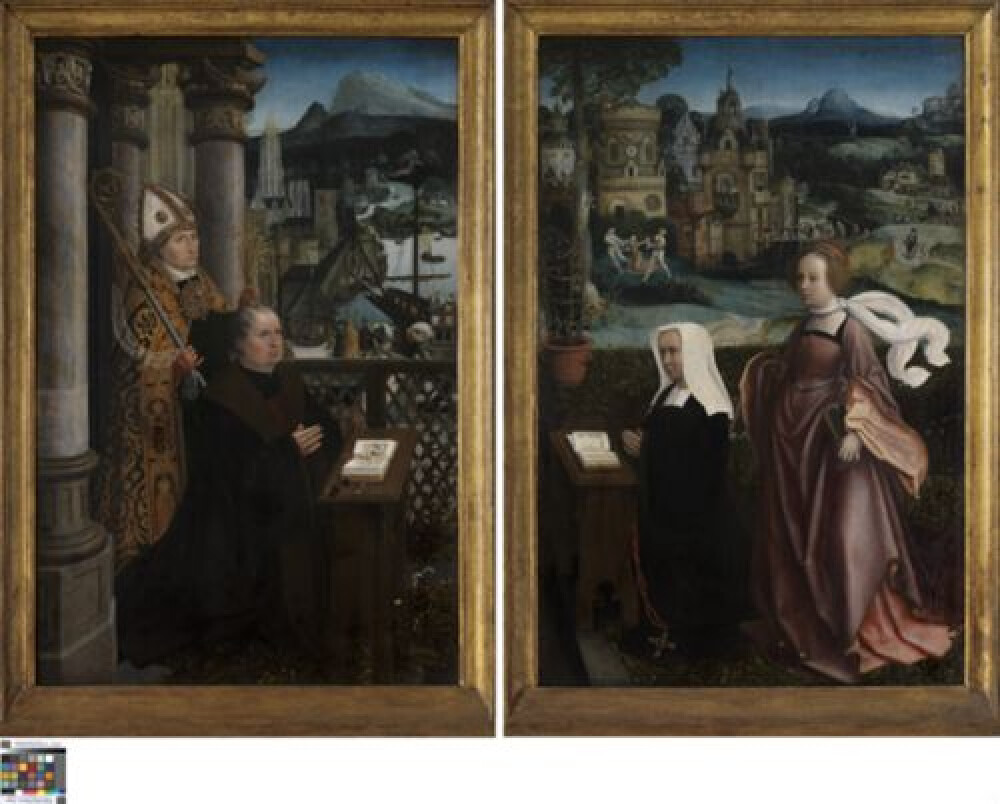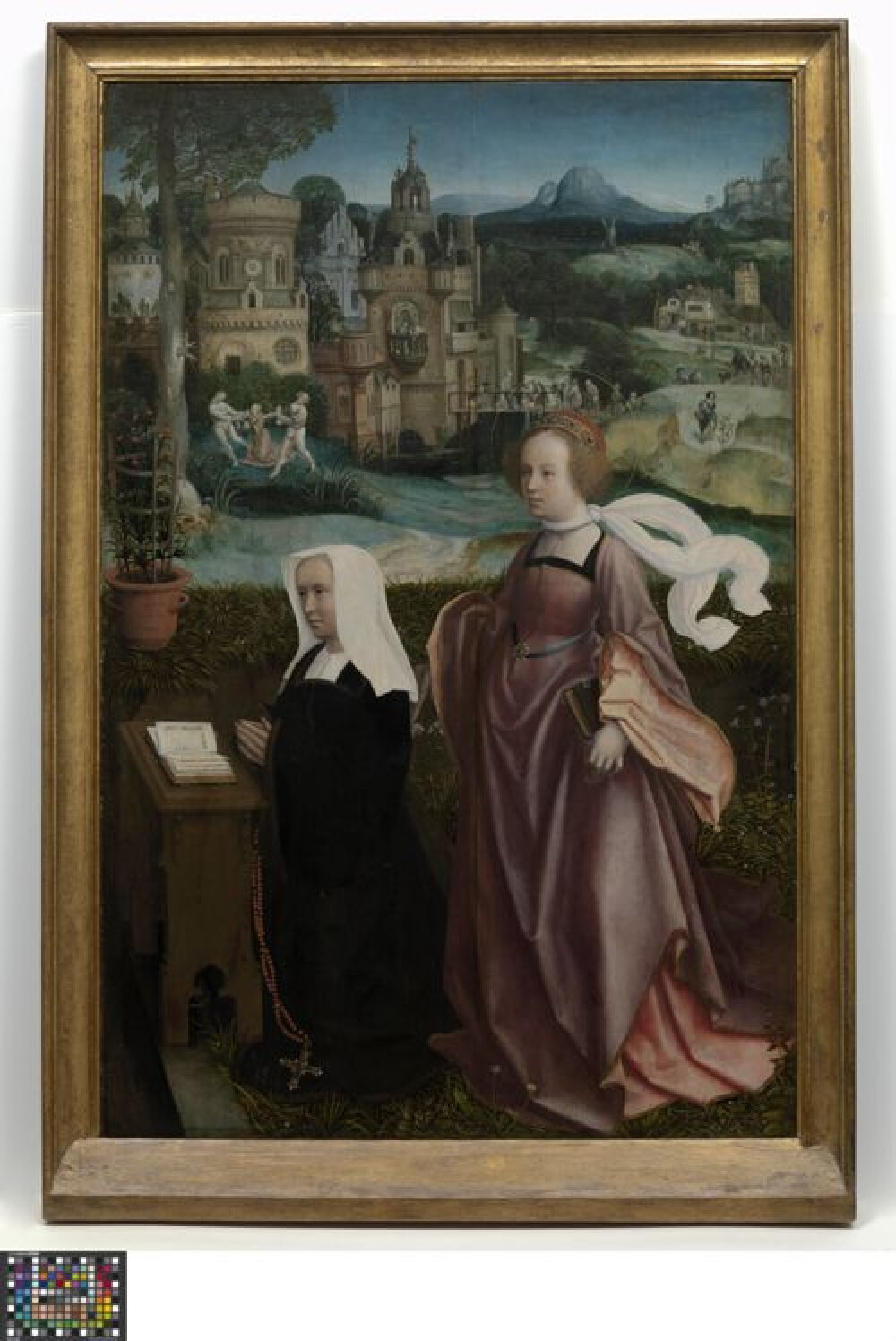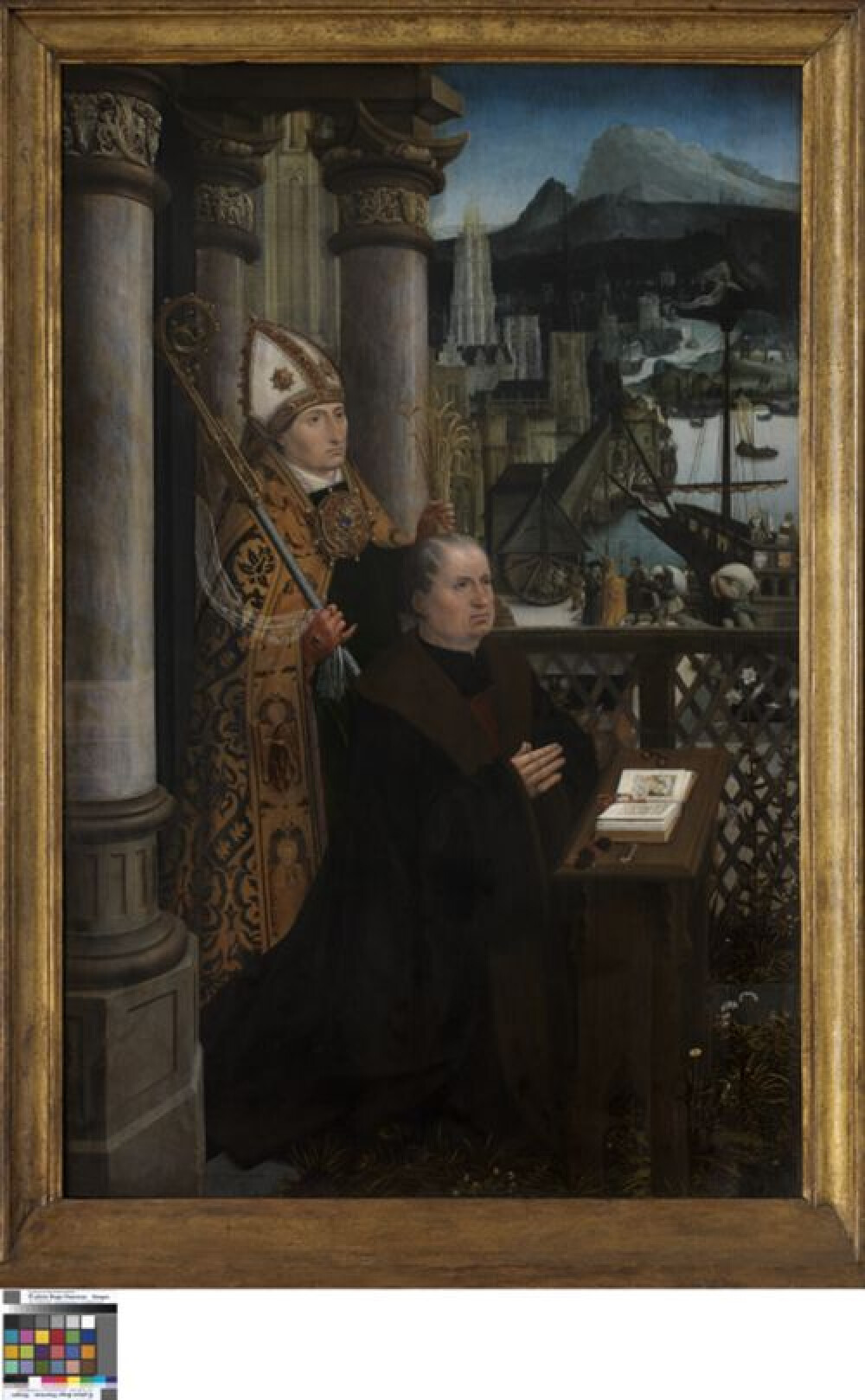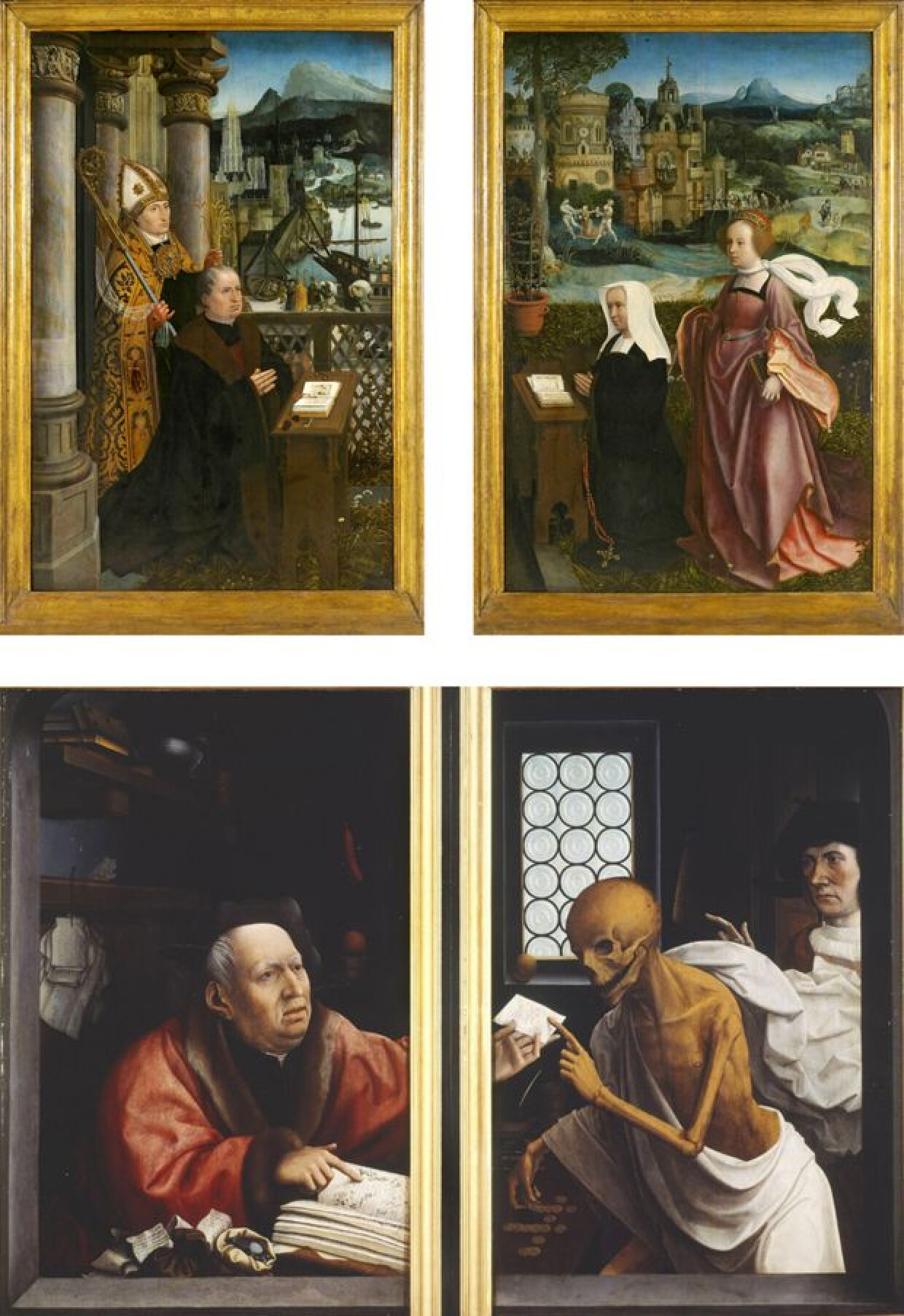Close
Manufacturer
Jan ProvoostPeriod and date
16de eeuwThese four panels were originally the panels of a triptych. The front and backs sides of the panels were separated before 1861 by sawing them lengthwise. It is assumed that the centre panel was lost. The unknown founders are depicted in the company of St Nicholas and Godelieve, kneeling in front of a prayer bench in the open air. Behind them, episodes from the lives of saints take place. St Godelieve can be recognized by her attribute: the cloth that was used to strangle her is tied around her neck. The two rear sides of the panels form a continuous scene. A moneychanger points to a line in an accounting register. Death lays down some tokens and points to the text held out to him by the money changer, presumably a promissory note. It is possibly that the man in the doorway with a raised finger is the artist.
MASTERPIECE
Jan Provoost was a prominent artist within the Bruges painters’ guild, and he regularly held the position of first and second supervisor, and was twice the guild’s dean. It is no surprise, then, that he met Albrecht Dürer twice during his journey through the Netherlands. We know from Dürer’s travelogue that he met Provoost in 1520, in Antwerp, and that they travelled together from Antwerp to Bruges in 1521, where Dürer stayed with Provoost for three days. The German artist drew the Bruges man on both occasions. Once in charcoal and once in silverpoint. Dürer’s "Portrait of a man" in chalk (The British Museum, London) bears great resemblance to the figure in the doorway in the Bruges painting, both in physiognomy and in the age of the person portrayed. For this reason, several scholars assume that this must be Jan Provoost. It is also striking that – although the painting has an elaborate underdrawing – the man in the doorway is not underdrawn. It is common for portraits in 16th-century paintings not to have been underdrawn, which further supports the hypothesis that this is very likely a portrait of Jan Provoost. Why Provoost wanted to portray himself on these panels, though, remains a mystery.

Manufacturer
Jan ProvoostPeriod and date
16de eeuw
Manufacturer
Jan ProvoostPeriod and date
16de eeuw
Manufacturer
Jan ProvoostPeriod and date
16de eeuw